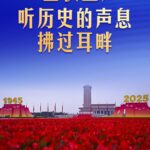The grassroots level is the “last mile” in connecting and serving the people. Here, there are “alleyway directors” who visit households, as well as first secretaries stationed in villages to assist the impoverished. The grassroots level reflects the well-being of the people and the direction of public sentiment.
“Only by doing grassroots work well can we ‘remain calm and composed despite storms.'” Having risen from the rural lands and starting as a Party branch secretary in a rural production brigade, the leader has “always been deeply concerned about grassroots work and holds great affection for grassroots cadres,” placing high importance on reducing burdens at the grassroots level.
Efforts to combat formalism and reduce burdens at the grassroots level are being deepened at their source and through institutional mechanisms. The “Several Provisions on Combating Formalism to Reduce Burdens at the Grassroots Level,” issued by the General Offices of the Central Committee and the State Council, propose: “Provincial Party committees and governments should guide their regions to establish and improve lists of responsibilities for townships (subdistricts) based on local conditions, conduct cleanup and standardization, strengthen dynamic management of the lists, and ensure alignment between responsibilities and authority, as well as between responsibilities and capabilities.”
Since February 2024, building on pilot programs, 38,000 townships (subdistricts) nationwide have fully implemented responsibility lists. By the end of June this year, all lists had been completed, yielding significant results.
Progress has been made step by step, year by year. How can the “critical question” of reducing grassroots burdens be answered? The responsibility lists for townships (subdistricts) embody the leader’s concerns and considerations.
Examining the lists reveals that clarifying the responsibilities of townships (subdistricts) is a key focus. “Reducing burdens at the grassroots level requires clarifying authority and responsibilities. Not every task should be pushed onto the grassroots level. It’s essential to define what work the grassroots should undertake.”
Where do grassroots burdens come from?
One major factor is the constraints of formalism and bureaucracy: “Trace management” is widespread, but it emphasizes “traces” over “results” and “records” over “genuine effort.” Inspections and assessments are excessive in number, frequency, and redundancy. “Mountains of documents and seas of meetings” have resurged…
“This situation must change!” The leader’s words are resounding.
In November 2024, in Siyi Village, Jiayu County, Hubei, a “Service to the Public Items List” caught the leader’s attention. “In the past, the emphasis was more on asking the public to do things. Now, it’s more about Party members and cadres serving the public—a fundamental shift.” The leader stated, “We must continue to reduce burdens at the grassroots level so that cadres can devote more time and energy to serving the people.”
A single list encapsulates practical answers to what should be reduced and how.
The “Several Provisions on Combating Formalism to Reduce Burdens at the Grassroots Level” was issued, marking the first time a Party regulation was introduced to institutionalize burden reduction at the grassroots level. The “Opinions on Comprehensively Establishing Responsibility Lists for Townships (Subdistricts)” further clarified their duties, forming a system where authority and responsibilities are clear, capabilities match duties, operations run smoothly, and support is strong.
Through documents and measures, the Party Central Committee has taken “strong actions” to address the problem of “a small horse pulling a big cart” in grassroots governance, helping to solidify the Party’s governance foundation at the grassroots level.
Burden reduction requires not just “reducing” but also “empowering.”
On July 30, 2024, the Political Bureau of the Central Committee held a meeting, explicitly stating, “We must strengthen institutional development and implementation, balancing burden reduction with empowerment at the grassroots level.”
Burden reduction and empowerment—these two dialectically linked verbs are key to understanding “the foundational work of modernizing grassroots governance.” Eliminating the harms of formalism and reducing burdens is meant to empower grassroots governance, enabling cadres to “work with lighter loads” and take initiative.
When viewed against the broader backdrop of national governance modernization, the deeper significance of this list becomes even clearer.
“The Party’s strongest foundation of support lies at the grassroots level,






